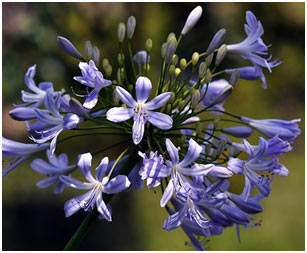Definition of Inflorescence
The method of arrangement of a group of flowers is known as inflorescence. Most plants develop inflorescence but small flowers are inconspicuous so they collect together to form inflorescence.
The main axis of the inflorescence is called a peduncle. A long unbranched leafless peduncle arising from the ground level is called a scape. The inflorescence may be terminal or axillary.
Terminal:
In this case, the inflorescence forms at the apex of the main branches. The main axis continues into the axis of inflorescence.
Example: Foxglove
Axillary:
In this case, inflorescence forms on the branches.
Example: Pea
Types of Inflorescences
The inflorescence may be simple, compound, or mixed.
Simple Inflorescence
The inflorescence in which branching of the main axis or peduncle is racemose or cymose is called a simple inflorescence.
- Racemose Inflorescence
The inflorescence in which the main axis develops lateral flowers and continues to grow indefinitely up to the last flower is called a racemose inflorescence. The main axis is monopodial. The flowers are developed in acropetal succession.

The oldest flowers are borne towards the base of inflorescence but younger flowers are borne towards the apex. The main axis becomes flattened. The oldest flowers are arranged towards the periphery and youngest flowers are arranged towards the center.
- Cymose Inflorescence
In this type, the main axis soon ends is a flower. It gives one or two lateral branches or daughter axis, each of which ends in flower. This process repeated several times. The daughter axis arises in the axil of bracteoles.
The flowers are borne in basipetal succession. The terminal flower is the oldest and the lateral flowers are younger and forms clusters. The young flowers are present towards periphery and old flowers are in central region of cluster.
The cymose inflorescence may be uniparous, biparous or multiparous.

Compound Inflorescence
The type of inflorescence in which the main axis is branched and bears flowers, in the same manner, is called a compound inflorescence. It may be:
i. Compound Raceme:
The main axis is racemosely branched and branches develop pedicellate flowers in a racemose manner.
ii. Compound Spike:
The main axis of the inflorescence bears small lateral spikes or spikelets.
iii. Compound Umbel:
A branched umbel is called a compound umbel. The branches arise from the main axis from the primary umbel. The flowers arise from each branch from secondary or partial amber. Bracts may be present.
Mixed Inflorescence
The type of inflorescence in which both racemose and cymose branching occurs is called a mixed inflorescence. It has the following forms:
i. Panicle of spikelets:
Spikelets are arranged on a panicle branching. Example: wheat.
ii. Raceme of cymes:
Paired secondary axis starts at biparous. But later it becomes uniparous which develops whorls of the sessile flower forming verticillaster.
iii. Raceme of capitula:
The main axis is branched in a racemose manner and each branch terminates in a capitulum.
Special Inflorescences
In some inflorescences, daughter axes are surpassed. So, the flowers are crowded together in several groups. It is difficult to determine the type of inflorescence in them. Therefore, they are called special inflorescences. It has the following types:
- Cyathium:
It looks like a single flower but in actual it is an inflorescence. Many axes are reduced in it. Complete suppression of petals and sepals occurs in flowers. The main axis ends in a central reduced female flower. The female flower ripens first and then the male ripens.
- Verticillaster:
The bracts in the floral region are opposite. Each bract contains a cluster of sessile flowers on its axis. The two clusters at the node form whorl-like arrangements called verticillaster. The cluster of flowers is a biparous cyme at first. Suppression of one or two branches occurs in it and it becomes uniparous.
- Umbellate cymose head:
It is present in onion and garlic. A long leafless stalk arises in the midst of radical leaves. This stalk bears a cluster of flowers at its upper end. These flowers appear to form umbel. In actuality, they form helicoid cymose clusters. That is why these are called umbellate cymose head.

